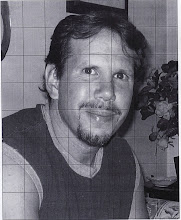





GENERAL DESCRIPTION OF WHAT YOU’RE DOING ON SHOOT DAY
PRODUCTION ORDER (who goes first that day, second, so on , how
long for each)- I believe the production order is
Ian
Nick
Ramon
WHAT EACH PERSON OR GROUP IS DOING (short description of each
set-up): My set-up will include a series of dolly-ins and rack-outs to create what has become known as the “Goodfellas” technique using a white or black backdrop and photographing two or several musicians.. The additional element would be a large Fresnel spotlight either mounted on a western dolly or stationary in which the lens would be manipulated in order to distort the shadow of each of the photographed musicians. The distortion effect with the camera movement in conjunction with the distortion effect of the shadow may produce some interesting effects.
The western dolly would be pulled backward and forward in combination with different combinations of zooms and dollys
4 set-ups for each musician.
1) Dolly in , zoom out, Fresnel moved closer
2) Dolly out, zoom in, Fresnel moved closer
3) Dolly in , zoom out, Fresnel moved farther away
4) Dolly out, zoom in, Fresnel moved farther away.
I would estimate a distance of probably eight to ten feet between the subject and background
It might be interesting to throw some kind of gobo up in front of the spotlight.

Camera will probably need to be mounted at a slight high angle in order to frame both musician and shadow but high enough so that the DP will not have to crouch.
TYPE OF MEDIA & HOW MUCH (do you want film, video, other kind
of video besides school cameras) and how much you need for film
stock or media)- About 130ft. of film-stock and possibly videotape.
EQUIPMENT NEEDS (what equipment do you need- be SUPER specific
and overestimate)-Arri-sr, follow-focus, western dolly, regular dolly and track, Fresnel spotlight, (filter holder, scrim, patterned gobo). ND filters, gloves, sandbags, video camera and tripod
CREW NEEDS (what crew members do you need for your shoots? Your
classmates will fill these roles be specific and thorough)-
1) DP
2) Assistant camera op to rack zoom
3) 2 Dolly operators
4) 1 Western dolly operator
5) 1 spotlight operator
GENERAL NEEDS (do you need actors, white t-shirts, balloons, a
bag of maggots, a red sheet, etc.?)- An absence of maggots.
The overall execution of this exercise was somewhat limited due to time constraints. I settled on using just Ian as the subject as opposed to the whole trio. What I realized is that in order to really maximize the overall idea and "look" to be obtained would have required much more practice time as well as set-up time. I will post the results if I get access to the video. It will be interesting to see what we obtained.



